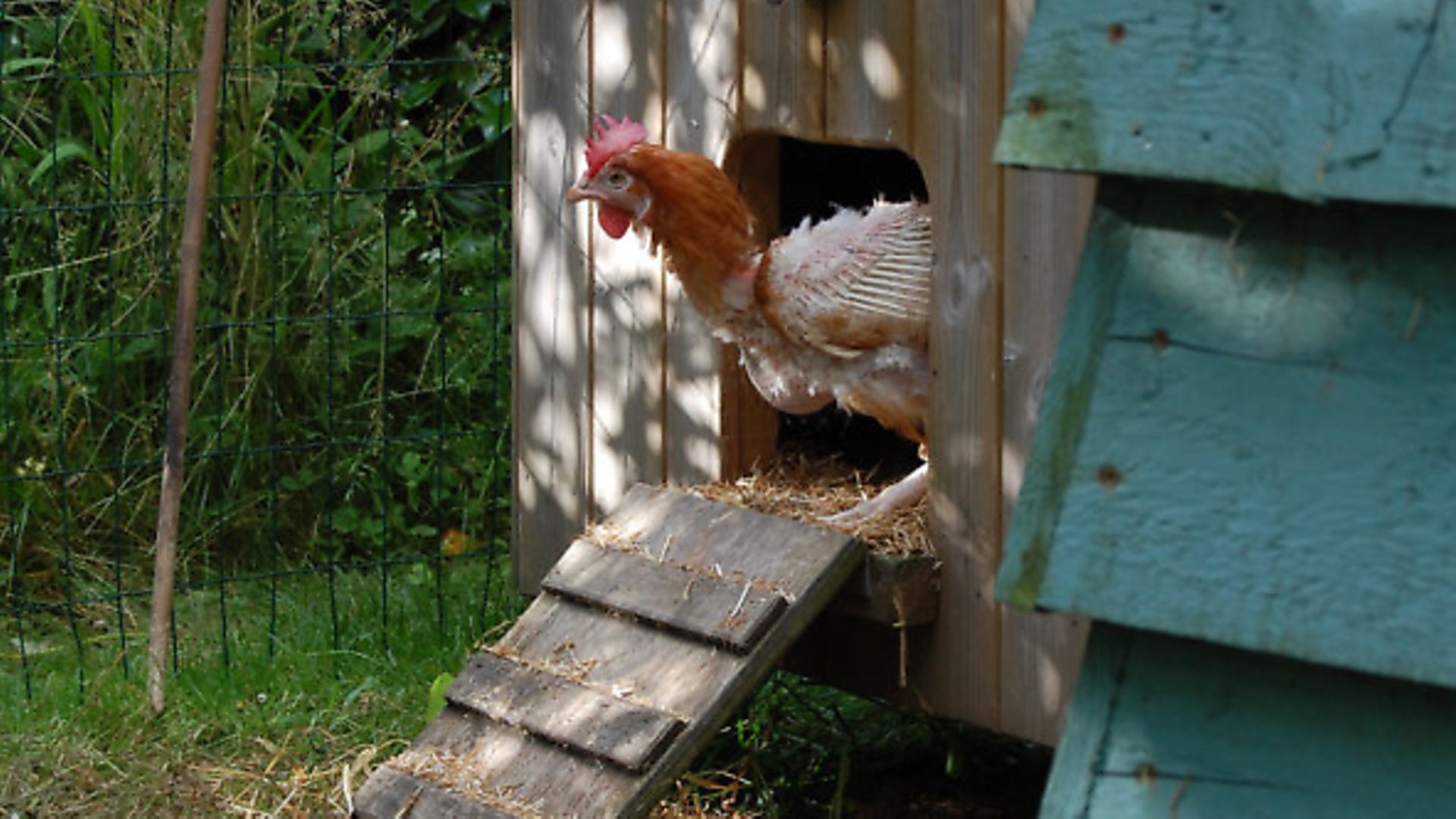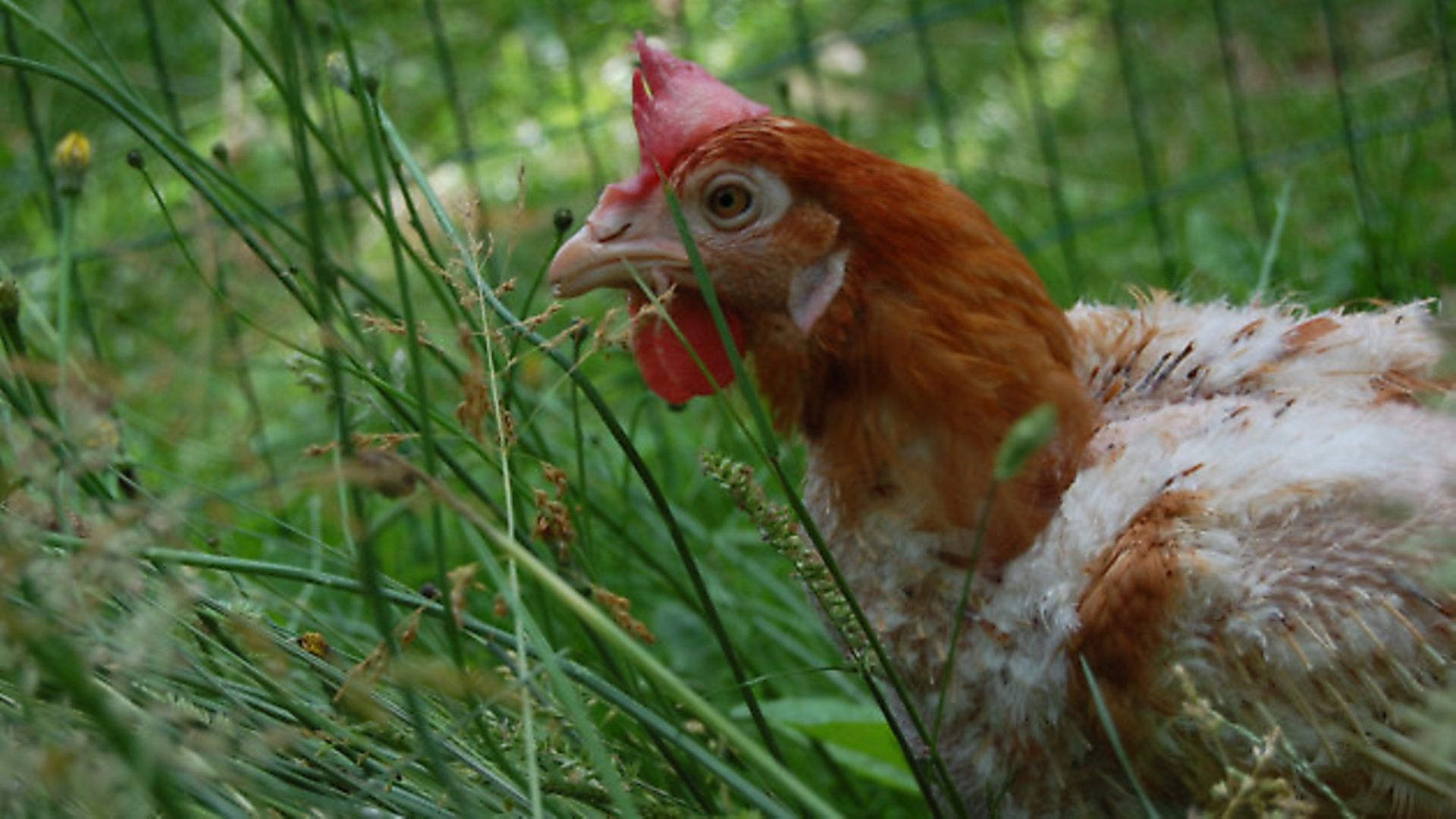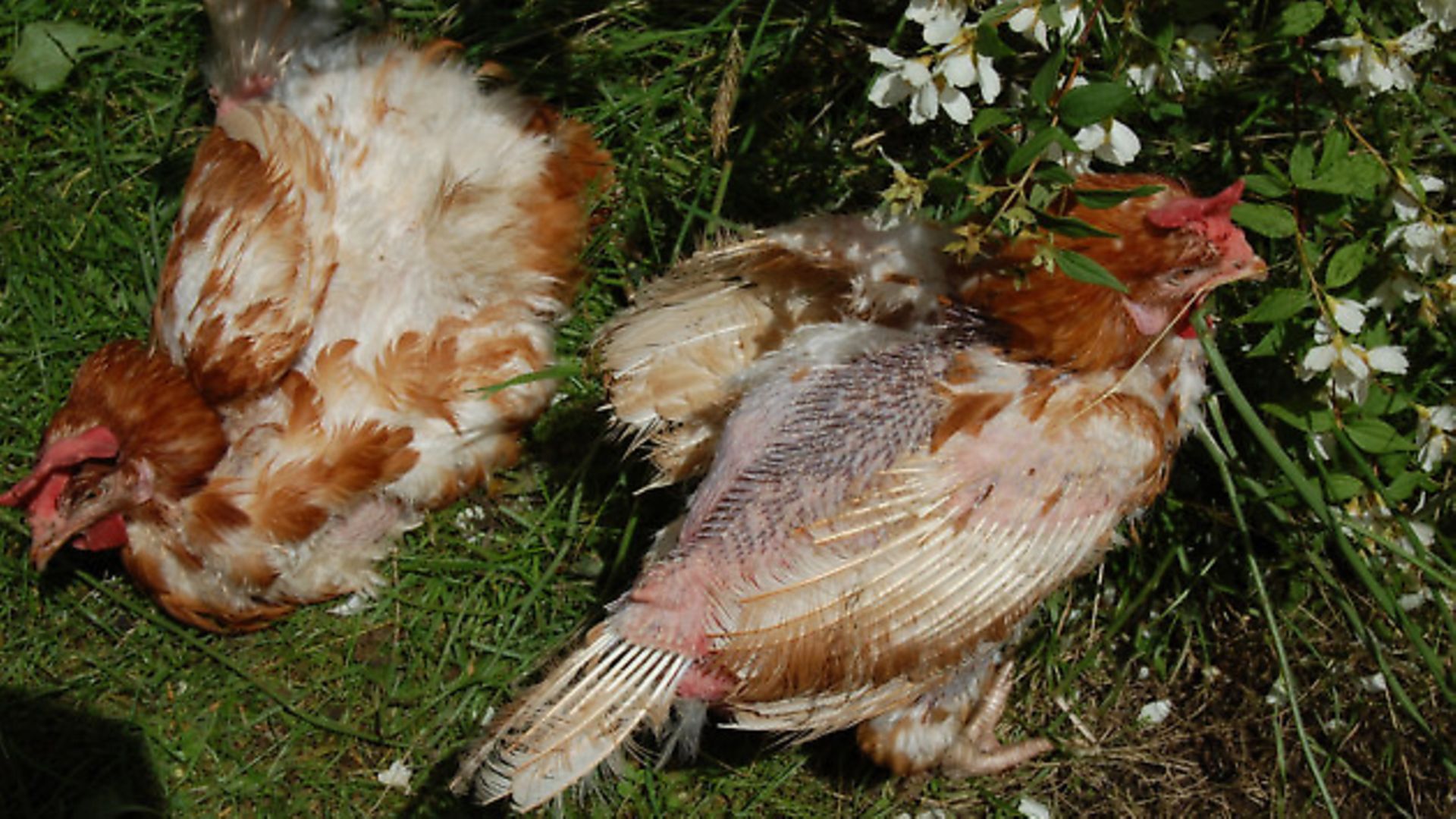Owen and Catherine Jones, from Devon, decided to adopt some ex-battery hens. Owen describes the experience

It’s fair to say collecting rescued chickens from the British Hen Welfare Trust isn’t much like choosing a new kitten or puppy.
There’s no looking at photos online or turning up and choosing the one that looks cutest or with the saddest eyes.
Instead you turn up at the charity’s collection site where scores of bewildered chickens have been delivered in crates from whichever farm has dispensed with their services.
You say how many you can take (just four in our case). A volunteer vanishes into the shed or barn, catches the nearest squawking birds that can be reached and puts them into the boxes, crates or cat carriers you’ve provided. So the first moment you really discover who you have brought home is when you release them into your garden or chicken run. Out they come, nervous and curious.
They look worn out. Their combs are limp and their eyes are dull. The lucky ones have only a few feathers missing, others are bald in large areas.

They have spent their short lives – probably 18 months – in what is known as an enriched or colony cage. While an improvement on the previous battery cages, they will still have been indoors all their lives, sharing a cage with up to 90 other hens.
Of the four we collected, the smallest had almost no feathers at all. If you’d wrapped her in plastic she’d have looked like an oven-ready bird from a particularly poor supermarket.
What do they know of the natural world?
Unused to grass underfoot, they walk curiously, taking ludicrously big steps. They are fascinated by everything.

Journey of discovery
We live near a main road, a farm and a railway and so every new sound is unusual – passing trains, emergency ambulances, birdsong, traffic, trains, horses, lawnmowers.
At each new noise the hens stop what they are doing, crane their necks and listen intently. Sudden noises startle them and they dive for cover.
But despite the newness of it all, it is clear there is something in their DNA that does not need to be taught.
When a sparrowhawk dives across the garden a blackbird raises the alarm. The hens freeze, clearly alert to the danger.
In very little time these tired creatures are beginning to behave exactly as hens raised in the farmyard would do.
They discover long grasses and enjoy reaching up to nibble seeds from the ends. They scratch in the soil beneath the fruit trees, instinctively snapping up any grubs they reveal. They dig into the warm earth and kick clouds of dust under their wings.
On a hot day they stretch out their wings in the sun, bathing in the heat like tourists on a beach. When it rains they shelter under the hedge, looking grumpy. Before long, rested and eating well, they bloom. Feathers appear, like tiny paintbrushes, from their pale skin.
Their eyes change, from a watery yellow to warm orange. Their combs become red.
And their eggs, on diet supplemented by fresh grass, have beautiful golden yolks.
Personalities, evident from day one, become more pronounced; the shy chicken, the bossy one, the trouble maker who will always be hatching an escape plan.
You can’t help but wonder if they remember anything of the caged life they have escaped.
And think of the millions who spend their whole lives in cages producing cheap eggs for consumers, never experiencing the sun on their backs or a good old dust bath.
? The British Hen Welfare Trust says in the UK there are approximately 16 million hens kept in colony cages. The charity has so far found retirement homes for over 500,000 caged hens, all of which were destined for slaughter.
Find out more at bhwt.org.uk
Image(s) provided by:
Archant
Archant
Archant







